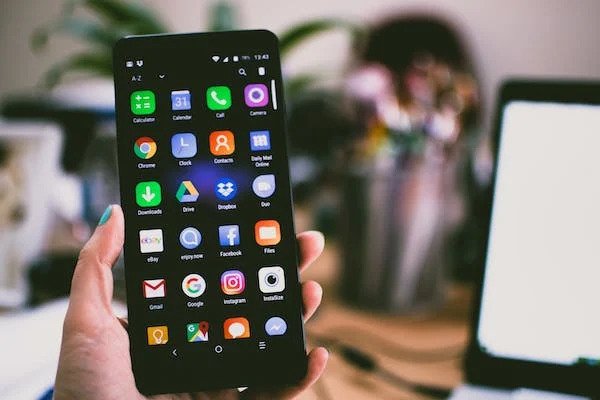Testing in the context of Apple and Android generally refers to quality assurance processes carried out to ensure that applications and software run smoothly on iOS (Apple) and Android (Google) platforms. Here’s a comprehensive overview:
Apple Testing:
- iOS Testing:
- Devices: Apple’s ecosystem is relatively closed compared to Android. Testing on a variety of iOS devices, including iPhones and iPads, is crucial to ensure compatibility.
- Simulators: Xcode provides simulators for testing on different iOS versions and device models without the need for physical devices.
- Beta Testing: Developers can use Apple’s TestFlight for beta testing, allowing them to distribute pre-release versions of the app to a limited number of users for feedback.
- App Store Guidelines:
- Apple enforces strict App Store guidelines. Apps need to comply with these guidelines to be accepted on the App Store.
- Pre-submission testing is crucial to avoid rejections. Guidelines cover design, functionality, security, and more.
- Performance Testing:
- Ensuring smooth performance on different iOS versions is essential. This includes optimizing for the latest features and hardware.
- Security Testing:
- Apple places a high emphasis on security. Developers need to ensure their apps follow best practices for data protection, encryption, and secure communication.
Also Read- Apple’s iOS 17.0.3 Update Targets Overheating Problems in iPhone 15 Pro and Pro Max
Android Testing:
- Device Fragmentation:
- Testing on multiple devices is necessary to ensure a consistent user experience.
- Emulators and Virtual Devices:
- Android Studio provides emulators for testing on various virtual devices. These help simulate different screen sizes, resolutions, and hardware configurations.
- Beta Testing:
- Google Play offers a beta testing program, allowing developers to distribute beta versions of their apps to a selected group of users.
- App Distribution:
- Unlike Apple, Android allows for third-party app distribution. Testing on alternative app stores or through direct APK distribution is important for apps not exclusively distributed on Google Play.
- Compatibility Testing:
- Ensuring compatibility with different versions of the Android OS is vital. This includes testing on both the latest and older versions to accommodate a broader user base.
- Security Testing:
- Android apps need to undergo rigorous security testing to prevent vulnerabilities. This includes secure coding practices, data protection, and permission management.
Cross-Platform Testing:

- Cross-Platform Tools:
- Tools like Xamarin, Flutter, and React Native allow developers to create apps that work on both iOS and Android. Testing in such cases involves ensuring compatibility across platforms.
- Responsive Design Testing:
- For apps that work on both mobile and tablet devices, testing should include responsive design testing to ensure the app’s UI adapts appropriately to different screen sizes.
- Cloud Testing Services:
- Cloud-based testing services provide a scalable solution for testing on a wide range of devices and OS versions, reducing the need for physical devices.
- Automation Testing:
- Automation tools like Appium, Selenium, and XCTest can be used for both iOS and Android to automate repetitive testing tasks, improving efficiency and consistency.
In summary, testing for Apple and Android involves device-specific considerations, adherence to platform guidelines, performance optimization, security measures, and thorough testing on diverse devices to ensure a positive user experience. The specific testing approach may vary based on whether the app is developed exclusively for one platform or is intended for cross-platform compatibility.
Benefits of Apple Android testing
Testing applications on both Apple (iOS) and Android platforms offers several benefits to developers, businesses, and end-users. Here are some key advantages of Apple Android testing:
1. Wider Market Reach:
- By ensuring compatibility on both iOS and Android, developers can reach a broader audience. This is crucial for maximizing the app’s market presence and potential user base.
2. User Experience Consistency:
- Testing on both platforms helps maintain a consistent user experience. Users should have a similar, if not identical, experience regardless of the device or operating system they use.
3. Increased User Satisfaction:
- Apps that function well on both iOS and Android contribute to higher user satisfaction. Users are more likely to engage with and recommend applications that work seamlessly on their preferred devices.
4. Market Flexibility:
- Supporting both iOS and Android allows businesses to adapt to market trends and user preferences. It provides the flexibility to target different demographics and respond to changes in the mobile landscape.
5. Reduced Time-to-Market:
- Comprehensive testing across platforms helps identify and address issues early in the development process. This can lead to faster release cycles and reduced time-to-market for the application.
6. Enhanced Brand Reputation:
- A well-tested and reliable app on both Apple and Android platforms contributes to a positive brand image. Users associate a brand with quality when its applications consistently perform well across different devices.
7. Optimized Performance:
- Testing on both platforms allows developers to optimize performance for each operating system. This includes taking advantage of platform-specific features and ensuring efficient resource utilization.
8. Adherence to Platform Guidelines:
- Each platform has its own set of guidelines and standards. Testing ensures that the app complies with these guidelines, reducing the risk of rejection during the app store submission process.
9. Cross-Platform Compatibility:
- For apps developed using cross-platform tools or frameworks, testing on both Apple and Android ensures compatibility. This is essential for maintaining a consistent experience across different devices.
10. Comprehensive Bug Identification:
- Bugs and issues that may arise due to platform-specific differences are identified and addressed during testing.
11. Security Assurance:
- Both iOS and Android have distinct security requirements. Testing helps ensure that the app meets the security standards set by each platform, protecting user data and maintaining user trust.
12. Effective Beta Testing:
- Beta testing on both iOS and Android platforms allows developers to gather feedback from a diverse group of users. This feedback is invaluable for making improvements and addressing issues before the official release.
13. Cost-Effective Automation:
- Automation testing tools can be leveraged for both iOS and Android, making it cost-effective to perform repetitive testing tasks and regression testing across different platforms.
In conclusion, testing an application on both Apple and Android platforms is a strategic decision that offers numerous benefits, including expanded market reach, improved user satisfaction, and a stronger overall presence in the mobile app landscape.
Is Android better than iOS?
The question of whether Android is better than iOS, or vice versa, is subjective and depends on individual preferences, needs, and priorities. Both Android and iOS have their strengths and weaknesses, and the “better” platform often comes down to personal preferences and specific use cases. Here are some factors to consider when comparing Android and iOS:
Android:
- Open Ecosystem:
- Android is an open-source operating system, allowing for greater customization and flexibility. Users can modify the system, install custom ROMs, and personalize their devices extensively.
- Device Variety:
- Android is used by a wide range of manufacturers, resulting in a diverse selection of devices in terms of price, size, and features. Users can choose from budget-friendly options to high-end flagship devices.
- App Customization:
- Android allows more flexibility in terms of app customization. Users can choose default apps, set default actions, and personalize the user interface to a greater extent.
- File Management:
- Android provides more straightforward access to the file system, allowing users to manage files, transfer data, and organize content more freely.
- Widgets and Multitasking:
- Android supports widgets on the home screen, and many Android devices offer robust multitasking capabilities, allowing users to run multiple apps simultaneously.

iOS:
- Ecosystem Integration:
- iCloud allows users to sync data, photos, and apps effortlessly between iPhones, iPads, Macs, and other Apple devices.
- App Store and Quality Control:
- The App Store is known for its strict quality control, leading to a generally high standard of apps. Users can expect a curated selection of applications that meet Apple’s guidelines.
- Consistent User Experience:
- iOS offers a consistent user experience across all devices, as Apple controls both the hardware and software. This can be appealing to users who prioritize a uniform and polished interface.
- Timely Updates:
- Apple provides timely and simultaneous software updates to all supported devices, ensuring that users have access to the latest features, security patches, and improvements.
- Security:
- The closed ecosystem and stringent app review process contribute to a lower risk of malware and other security threats.
- Optimized Apps for Tablets:
- iPad apps are often optimized for larger screens, providing a better tablet experience compared to some Android apps.
What is IOS APP testing?
iOS app testing refers to the process of systematically evaluating and validating applications developed for the iOS operating system, which is used exclusively by Apple devices such as iPhones, iPads, and iPod Touch. The primary goal of iOS app testing is to ensure that the application functions correctly, meets user expectations, and adheres to Apple’s guidelines and standards. The testing process typically involves various types of testing to cover different aspects of the app’s functionality, performance, and security. Here are some key aspects of iOS app testing:
1. Functional Testing:
- Unit Testing: Testing individual components or functions to ensure they perform as intended.
- Integration Testing: Verifying that different components work together seamlessly.
- System Testing: Evaluating the overall functionality of the entire application.
2. Usability Testing:
- Assessing the user interface (UI) and user experience (UX) to ensure they are intuitive, easy to navigate, and meet user expectations.
3. Compatibility Testing:
- Ensuring the app works correctly on different iOS devices (iPhones, iPads) and iOS versions. This involves testing on various screen sizes, resolutions, and hardware configurations.
4. Performance Testing:
- Load Testing: Evaluating how the app performs under normal and peak load conditions.
- Stress Testing: Assessing the app’s stability under extreme conditions.
- Speed Testing: Verifying that the app responds quickly and efficiently.
5. Security Testing:
- Identifying and addressing potential security vulnerabilities, including data protection, secure communication, and secure storage.
6. Installation and Upgrade Testing:
- Verifying that the app can be installed and upgraded without issues. This includes testing installation from the App Store and other distribution channels.
7. Network Testing:
- Assessing the app’s behavior under different network conditions, such as 3G, 4G, Wi-Fi, and offline modes.
8. Localization and Internationalization Testing:
- Ensuring that the app functions correctly in different languages and cultural settings.
9. Accessibility Testing:
- Evaluating the app’s accessibility features to ensure it can be used by individuals with disabilities.
10. App Store Compliance:
- Ensuring that the app complies with Apple's App Store guidelines, including design, content, and functionality requirements.
11. Beta Testing:
- Distributing pre-release versions of the app to a limited number of users through Apple's TestFlight for feedback and bug identification.
12. Regression Testing:
- Verifying that new updates or features do not introduce new issues or negatively impact existing functionality.
13. Automated Testing:
- Utilizing automated testing tools, such as XCTest or third-party frameworks, to streamline the testing process and ensure consistent results.
14. User Acceptance Testing (UAT):
- Having real users test the app in a real-world environment to gather feedback on usability and overall satisfaction.
Effective iOS app testing is crucial for delivering a high-quality application that provides a positive user experience, meets Apple’s standards, and operates reliably across different devices and environments. It helps identify and address issues early in the development process, contributing to the overall success of the application.
Conclusion:
The choice between Android and iOS ultimately depends on individual preferences, needs, and priorities. Some users may prefer the customization options and device variety offered by Android, while others may prioritize the seamless integration and consistent user experience of the iOS ecosystem. Both platforms have a large user base, and each has its own set of advantages. It’s recommended to consider your specific requirements, preferences, and the ecosystem that aligns better with your other devices and services when making a decision.


































